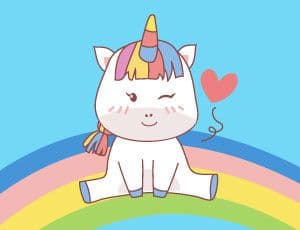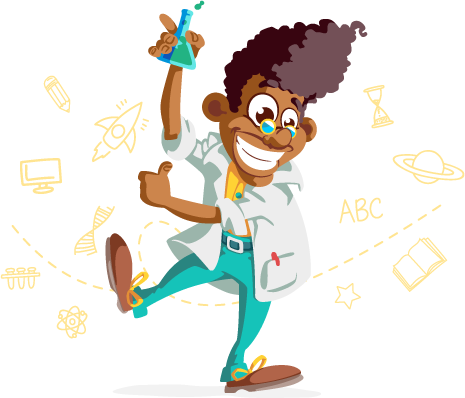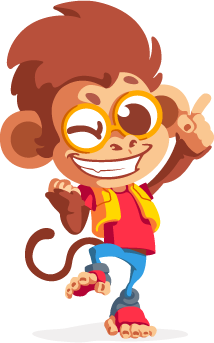Escola Games | Jogos Educativos
https://www.escolagames.com.br
Teacher's support sheet

Magic Unicorn
Im the Magical Unicorn and Im going to take you on an amazing journey. You can color and have a lot of fun in my imaginary world. How about “Paintar o Sete”? In this versatile game, the protagonist is a very cheerful unicorn who likes to vary his clothes and accessories. You will color it and make it much prettier. Use your creativity and logical reasoning to start this fun journey through the world of imagination and Fairy Tales. After coloring the proposed images in the online game, how about creating your unicorn and making a little story? At Story Time, you and your friends will have the opportunity to read your Fairy Tales to each other. Cool huh???!!! Get to work, kids!!!

Teacher's tips
Level of Education: Elementary School
Age 05 to 07 years old
It is known that a “Fairy Tale” is a type of story in which we come across fantastic characters from folklore, such as dragons, fairies, kings, queens, princesses, princes, giants, gnomes, talking animals, unicorns or witches. They are stories full of enchantments. In the game under study, we have the unicorn as the central character and around it an imaginary world that touches children's sensibilities. It is very important for a child to dream of an enchanted world and travel in the universe of reading to build knowledge in a playful way. Fairy Tales consist of short narratives, whose stories revolve around a central theme and whose objective is to transmit knowledge and cultural values from one generation to another.
As for Children's Literature, the countless stories contribute to the pedagogical practice, in this case, stimulating imagination, curiosity, sensitivity, fantasy, in addition to encouraging children to be more creative and to understand their feelings, including fear. When coloring the images and encountering the unicorn, the child will perceive the profile of this character that at first generates fear, but is docile and sensitive at the same time. To better illustrate the theme, the teacher can tell other stories that are related to the imaginary world and motivate the production of verbal (written predominates) and non-verbal texts. Remembering that non-verbal language texts are those that use other elements to build meaning, such as sounds, colors, shapes, images, etc. Examples of non-verbal language are traffic signs or other signs, which, through images, communicate their messages. However, most of the texts have mixed language, that is, more than one type of language. Commonly, images such as photos or illustrations are used to contribute towards written texts. In the online game in which the unicorn is revealed through colors, there is a predominance of non-verbal text, but the child can use it to start verbal or mixed production. It is up to the educator to take advantage of it in text production workshops or staging.
It is noteworthy that online educational games favor the global formation of students and promote the development of cognitive and socio-emotional skills. They provide creativity, logical reasoning, critical thinking, empathy, the ability to work as a team. The online game “Magic Unicorn” provides space for various activities to be carried out at school. It is enough that teachers are willing to carry out a project that addresses the disciplines that are within the subject under study. Taking students to the school library to research this mythological animal will be very interesting. This will wake them up for the game and activities that will be developed. [FIM-DICA]
Learner outcomes
Dealing with online games that develop your skills and competencies, motivating you to an imaginary context;
Participate in events involving more than one discipline;
Focus on activities that lead to learning in a playful way;
Interact with colleagues and educational family in order to become a good citizen;
Know the different languages and different forms of expression;
Be the protagonist of your learning;
Expose orally what you learned based on different resources;
Create new records from the various readings taken during the survey;
Contextualize and problematize the theme to be investigated;
Dramatize children's stories and explore different types of language, such as plastic, corporal, musical and dramatic;
Improve written and oral expression by reading Fairy Tales.
Teachers' goals
Enable students to produce verbal and non-verbal text;
Develop skills and competences within an imaginary and artistic context that leads to textual production;
Present the characteristics of the text that manifest themselves in different ways, with different structures and languages, intentions, contexts, target audience and variable authorship;
Take students to experience different forms of artistic expression (drawing, painting, collage, comics, folding, staging, etc.);
Introduce the imaginary universe of Fairy Tales to the class, but emphasizing the character of the unicorn;
Enable research in the classroom in order to give students the possibility of becoming protagonists of their own learning;
Stimulate the development of research projects;
Promoting the habit of reading, seeking to transform the student into an assiduous reader capable of imprinting meanings and meanings to each reading;
Ensure a more affective relationship between teacher and students and facilitate better integration into the school environment;
Enable the experience of emotions and the exercise of fantasy and imagination through the reading of Fairy Tales;
Carry out a multidisciplinary project and invite parents to participate.
Suggestions of approaches for the teacher
In addition to the Arts and English teacher, the Science teacher will be able to take advantage of the online game to propose research on the unicorn horn, as it has magical powers according to mythology. According to Thomas Bulfinch, in his book The Age of Fable, unicorns were a target and a problem for hunters, since their horn was moved according to the animal's will, functioning as a kind of sword in its defense. It was in the horn that all its strength resided, still serving as a source of security for the animal.
The Literature teacher might ask the children if they would like to have a unicorn horn. The answer will definitely be yes. From there, allow them the power to choose an order to be carried out by the unicorn's horn. It will be a very interesting class. Children can write this request on a piece of paper and then read it to the others. It will be a very meaningful moment of interaction. The teacher has to mediate this moment, suggesting to the class that they ask for positive things, that are related to a better world or to the dreams and goals of each one. After this dynamic, how about encouraging the kids to create their enchanted horn using recyclable material? An exhibition of enchanted horns can be held to decorate a corner of the classroom.
More about the content
There are countless possibilities that lead to the depth of the subject under study. Educators will be able to set up a MULTIDISCIPLINARY project. The multidisciplinary projects are part of the school's pedagogical proposal, which aims to help the student understand the relationships between the teaching areas, favoring the highest quality of learning, as well as the development of their skills. It is possible to carry out it from Kindergarten onwards and carry it out together with Fundamental I. It will be a project to be presented on a special day. The Magic Unicorn will be the central theme of the project and magic will predominate on the day of the presentations. All productions and drawings will be presented on that day. Students can produce narratives and poems to be recited. Among the narratives produced by the students, one can be chosen for a play. Here are good tips to transform the school space into a pleasant environment that favors knowledge. A teacher can dress up in a unicorn costume to brighten up the atmosphere on the day of the event. Parents should be invited to this time. The partnership between the school and the parents is essential for successful learning and social responsibility.
